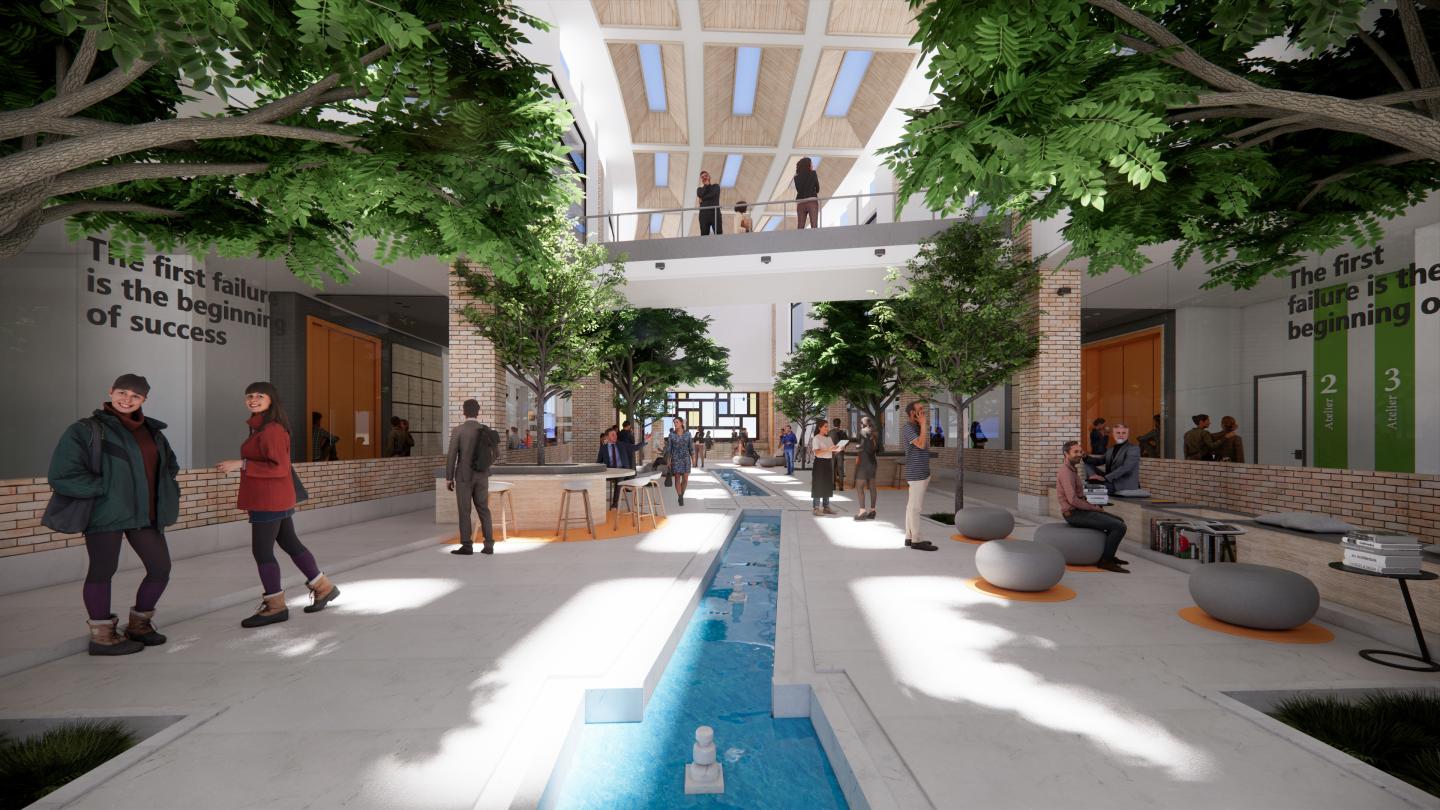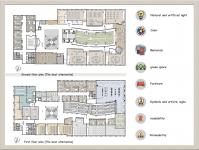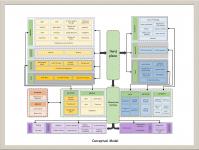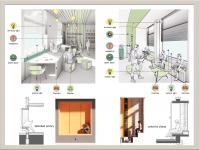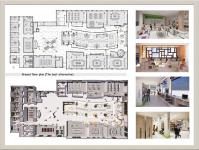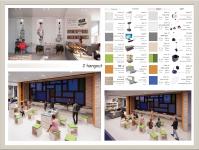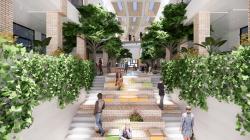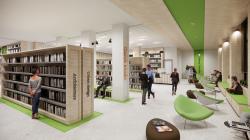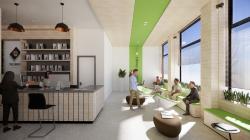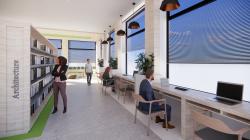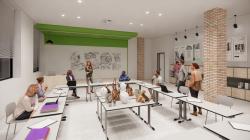the university's hangouts as a third place to promote cooperative learning:
Universities are an environment for learning, education, research, and research, where many social relationships and interactions are formed between people present in these environments, therefore, the university space should have the characteristics of a space to establish more relationships between professors and students and other communities. have the ideal collective. By designing collective spaces as academic hangouts in universities, it is possible to help increase students' interaction, participation, and learning. These spaces are social environments that depict students' attitudes, perceptions, and behavioral styles to improve interaction and learning. These places should respond to the needs and expectations of students and have the capacity to generate ideas. It is also a meeting place for people who use it continuously and at relatively fixed times, it is free to attend and people talk, get information and learn, renew their strength and rest, etc.
University hangouts can create a sense of relaxation and enjoyment of the place in its users by creating a friendly space for exchange and discussion and can be one of the third places mentioned by Aldenberg, spaces that people use for socializing and interacting.
As a third place, these hangouts can be used as a place for informal and formal gatherings of people, making friends and getting to know each other, having fun and spending free time, scientific discussions, chats, group study of students, meetings of social groups, etc. take The total area of the college is 6000 square meters, and the total area of the designed hangouts is 2000 square meters.
The Faculty of Architecture and Urban Planning of Ferdowsi University of Mashhad started its work in 2004 by accepting 71 female and male students and currently continues its work with more than 400 female and male students in two departments of architecture and urban planning. During the interviews and observations that took place in the space, the strengths and weaknesses of the project were found in the majority of the SWAT table, and according to this table, the existing hangouts in the Faculty of Architecture and Urban Planning were redesigned to promote collaborative learning.
2024
In Iran's university system, professors often rely on formal and traditional teaching methods to encourage students to memorize and understand scientific concepts; In this method, there is less opportunity for cooperation, consensus, discussion and dialogue between professors and students and students with each other. In addition, the large distance between academic education and professional work in society has caused university graduates, especially architecture students, to have weaknesses in working groups and employment in society. Currently, one of the important indicators in order to solve this problem, which has been raised in the new views of education in the world, is cooperative learning. On the other hand, today the level of social interaction and presence of students in university spaces has decreased, which can cause the formation of adverse effects such as discomfort and stress in the university space. Therefore, it is necessary to consider and design university hangouts as a third place for students, so that they can relax and rejuvenate in these places; Also, these spaces are a platform for the formation and improvement of collaborative learning.
Hangout 1: Space Stairs
In addition to the wide green space and natural light, this hangout has provided an attractive place for students to sit and sit for a long time. By placing a cover on the brick stairs, which is made of vinyl and micro leather with nano coating, it provides comfortable seating for students. We provided an audience.
Hangout 2: Cafe
The cafeteria was placed near the open studio and the end of the learning garden in order to provide services to these two spaces. Students can use the services of this space during their breaks. The flexible folding and opening tables in the vicinity of the cafe make the space permeable. Also, modern materials such as microcement of the microcourse type have been used in the wall for flexibility and adaptability to the environment.
Hangout 3: Atelier Azad
In this hangout, modular furniture is used to adapt to the needs of students, the readability of the space is provided by color and typography, and a space is designed for discussion and group projects.
Hangout 4: Farium
A space with rotating geometry and circular furniture that, combined with the green space, invites students to be more present and interact around group projects.
Hangout 5: Chat room
In this hangout, the emphasis is on the relationship between professor and student, as group criticism and analysis is done on students' works.
Hangout 6: Rotating seating
Tables with u-shaped geometry are designed in combination with the columns of the learning garden, which are made of natural walnut veneer. The light that enters the space from the ceiling has brought life to the space next to the shade of the tree.
Hangout 7: Study room
The middle space of two columns was a suitable place for designing a platform for reading. Between this platform, there is a compartment for placing magazines, books and publications.
Hangout 8: Columns of memory
9 brick columns were placed in the learning garden in accordance with human proportions, on which students can place writings, hand sketches, etc.
Library:
Spatial variety was created in the library, a space was designed for individual study, collective study and group work. Green color was used as the best color for learning spaces that cause relaxation, peace and harmony, and the legibility of the space was provided by typography and color. Attention to natural lights and optical luxury, artificial lights and green space can be seen compared to the existing situation in the space.
Student: Neda Abdollahzade (Master student of Interior Architecture, Ferdows Institute of Higher Education, Mashhad, Iran)
Supervisor: Dr Maryam Mojtabavi (Assistant Professor, Department of Architecture, Ferdows Institute of Higher Education, Mashhad, Iran)
Favorited 4 times
